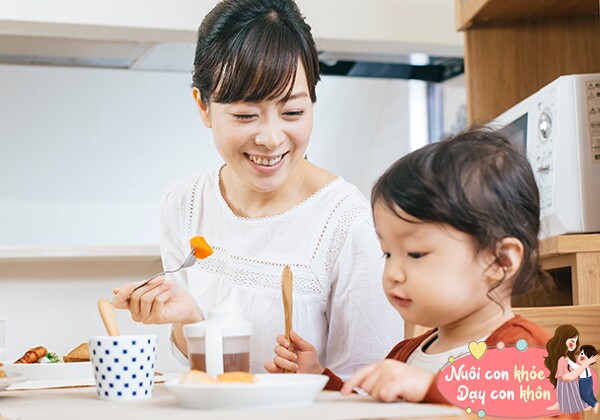As the cold season approaches, it’s important to prioritize the health and well-being of young children. Here are some tips to ensure they stay healthy and set a strong foundation for their growth and development in the coming year:


Early to Bed, Sufficient Sleep
For children, adequate sleep is the foundation for growth and development. Sleep aids in the body’s recovery, profoundly impacting brain development, immune function, and overall health. During this stage of rapid growth, establishing healthy sleep habits is crucial.
In the winter, with longer nights and shorter days, this becomes even more important. Putting children to bed early allows their bodies to absorb natural energy. Early sleep ensures they get enough rest and supports the production of growth hormones, vital for height and weight development.

Early to bed, ensure sufficient sleep.
In the morning, letting children sleep a little longer is also beneficial. During this time, cold air tends to settle in, and if children go outside too early, they may face health issues like colds or respiratory infections. Allowing them to sleep a bit more helps avoid exposure to cold air, and their bodies can adjust to the temperature change naturally.
In addition to sleep duration, sleep quality is essential. A deep and uninterrupted sleep enables children to accumulate energy, boost immunity, improve mood, and enhance focus throughout the day.
Research shows that well-rested children exhibit better learning and memory retention, contributing to their intellectual development.

Stay Warm, But Not Too Hot
During the chilly winter months, keeping children warm is a top priority. However, it’s important to maintain a reasonable level of warmth without going overboard.
Children tend to have higher metabolisms and are more active, making them more prone to sweating than adults. Overdressing them or keeping them in overly heated spaces can lead to excessive sweating. This can result in enlarged pores, making it easier for cold air to penetrate their bodies. Consequently, they may feel colder and become susceptible to colds or other illnesses.
To ensure your child’s comfort, pay attention to adjusting their clothing layers or the room temperature as needed. Consider their actual physical condition and the temperature difference between indoors and outdoors.

Stay warm, but not too hot.
For example, if your child is active and playing, removing an outer layer can make them feel more comfortable and prevent stuffiness. Conversely, when going outdoors in the cold, adding an extra layer of warm clothing will help keep them cozy.
Additionally, consider the fabric of their clothes. Opt for materials that absorb sweat well and provide effective warmth, such as wool, cotton, or specialized fabrics with heat-retaining properties. Avoid non-breathable fabrics that can increase discomfort and a sense of heat.

Engage in Suitable Outdoor Activities to Boost Physical Strength
Despite the cold, outdoor activities are still essential for children during winter.
Sunlight contains ultraviolet rays that promote vitamin D synthesis and strengthen bones.
Moreover, outdoor activities allow children to breathe fresh air, improve lung and heart function, and boost their immune systems.
Parents can opt for outdoor play during noon when temperatures are relatively higher and sunnier, ensuring their children stay warm.

Focus on Nutrition
Warm Foods
During winter, it’s advisable to feed children warming foods to combat the cold and boost energy levels. Examples include beef, chicken, soybeans, carrots, and sweet potatoes. These foods are nutrient-rich and help warm the body while enhancing immunity.
Additionally, parents should incorporate some cooling and moisturizing foods, such as lotus seeds, to prevent excessive internal heat from causing irritability.
Porridge for Nutritional Value
Porridge is a gentle, easily digestible, and nutritious option for winter. Parents can choose ingredients with medicinal and nutritional properties, such as jujubes, black beans, shiitake mushrooms, sweet potatoes, black sesame seeds, and lotus seeds.
These foods are rich in nutrients and have the effect of nourishing the kidneys, essence, and marrow. For children, black sesame porridge or sweet potato porridge are excellent choices, offering both delicious flavor and health benefits.

Focus on nutrition.
Appropriate Amounts of Salty and Black Foods
In traditional Chinese medicine, the kidney is associated with winter, and it is believed to store essence and is the foundation of innate health. According to the five elements theory, salty foods benefit the kidneys. So, during winter, moderate consumption of salty foods like seafood, seaweed, and sea moss is recommended.
Similarly, black-colored foods like walnuts, black sesame seeds, black beans, and black rice are believed to tonify the kidneys. Parents can incorporate these foods into their children’s diets according to their tastes and preferences.
Calcium Supplementation with Bone Broth
While many parents believe that bone broth can provide calcium, the reality is that it contains more fat than calcium. Consuming large amounts of bone broth will not achieve the ideal calcium supplementation effect and may interfere with the consumption of other nutrient-rich foods like vegetables and meat.
Therefore, while a small bowl of bone broth in winter is fine, don’t rely on it as a primary source of nutrition. Instead, ensure your child receives adequate nutrition through a balanced diet.
Every child is unique, and their nutritional needs may vary. So, it’s important to tailor their diet accordingly.
Emphasize Food Safety and Hygiene
Winter sees an increase in food poisoning and infectious diseases, so parents should pay attention to food safety and hygiene when preparing meals for their children. Choose fresh ingredients and avoid consuming expired or spoiled food.
Additionally, keep utensils and dining areas clean and sanitized to minimize the spread of germs.

Pay Attention to Your Child’s Emotions and Psychology
As the winter chill sets in, children may experience feelings of loneliness. Parents should be attentive to their emotional and psychological changes, engaging in more communication and showing extra care and support.
Encouraging children to participate in indoor activities or hobby classes can enrich their lives and reduce psychological pressure.

Pay attention to your child’s emotions and psychology.
In summary, as winter approaches, focus on natural rhythms and prioritize adequate nutrition for your children. Plan according to your family’s circumstances to ensure your child stays healthy during the cold season, setting a strong foundation for their growth and development in the coming year.
Why Do Hotel Beds Have Four Pillows?
The mystery of the extra pillows in hotel rooms has long intrigued travelers. While it may seem odd to provide four pillows for a maximum occupancy of two, there’s a practical reason behind this. Hotels strive to offer a luxurious and comfortable experience, and extra pillows cater to diverse sleeping preferences. Some guests may prefer a firmer pillow for back support, while others might opt for a softer one to cuddle or elevate their legs. These additional pillows enhance comfort and contribute to a good night’s sleep, ensuring guests wake up refreshed and energized during their stay.
Unveiling the Four Drastic Differences Between Late and Early Sleepers
The age-old debate on early vs. late bedtimes for children has sparked much discussion among experts. Four key differences have been highlighted, which all parents should be aware of, to ensure their children’s sleep patterns are healthy and beneficial. These insights will help parents make informed decisions about their children’s sleep routines and encourage positive adjustments for their well-being.







































